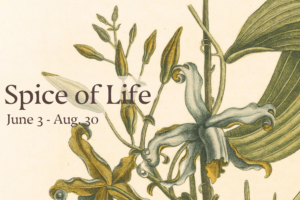
Botanists working in the Philippines recently described a species of begonia new to science and named it in honor of Peter Fritsch, the Garden’s vice president of research and conservation.
Begonia fritschiana has bright green, oval leaves. Its pale pink flowers bloom on thin stalks that emerge three to four inches above the leaves. Its name recognizes Fritsch for “discovering novel species and … his unwavering support for and participation on botanical exploration and research in the Philippines.”
The plant was discovered by Victor Amoroso, professor at Central Mindanao University, and his field team. They worked in cooperation with members of the Kulamanon/Manobo, an indigenous tribe from the area. Amoroso named the species along with Rosario Rubite, a world authority on begonias from the University of the Philippines.

While Fritsch has worked in the Philippines for several years, most recently as part of the Plant Discovery in the Southern Philippines program, he was not involved in the discovery or naming of the plant. “So the first time I saw the results was when they [Amoroso and Rubite] showed me the publication,” said Fritsch. “But it certainly is an honor.”
Begonia fritschiana grows on rocky hillsides around Mt. Pinamantawan, part of the Tangkulan Range in Mindinao, the second-largest island in the Philippines. The rugged region is considered botanically underexplored.
It’s not surprising, said Fritsch, that scientists would find many previously undescribed plants there. As well as being little-studied, the region contains many plants that only grow in a limited area–on one hillside, say, or in one small valley.

This begonia, for example, grows in a single area of less than six square miles and has a total population of fewer than 100 individual plants. This puts the begonia in serious danger of extinction, noted Amoroso and his colleagues in their article, especially since the area is threatened by human activity.
“The area has no protection status and so people can log the forests,” said Fritsch. “In many parts of the Philippines, people also collect plants like Begonia, orchids, and Medinilla to sell in local markets. Much of the forest wildlife in the Philippines is threatened by deforestation in one way or another.”
Fritsch is one of several of our researchers with a species bearing his name. For example, in 2020, a beetle was named Cis okennoni in honor of Research Associate Bob O’Kennon; in 2019, a fern found in Colombia and Peru was named Elaphoglossum vascoae after Research Botanist Alejandra Vasco.
It’s a rare honor for the scientists who help us better understand the natural world.







